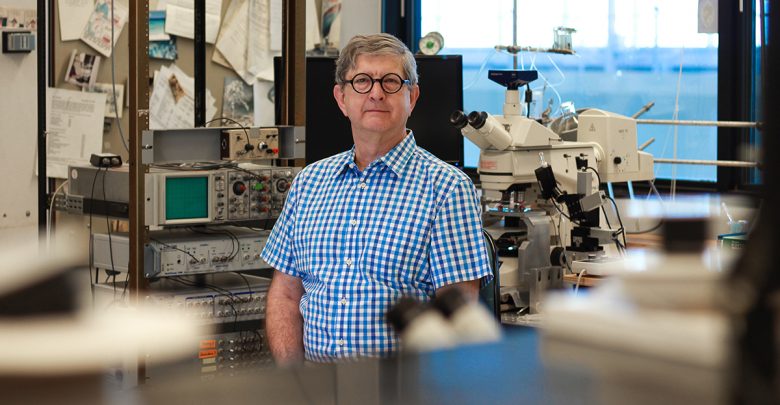 Shelby Soke
Shelby SokeResearchers in the University of Alberta’s pharmacology department have found another method to decrease anxiety in rats, potentially leading to new drug treatments for humans.
In a paper published in The Journal of Neuroscience in May, pharmacology professor William Colmers found that disabling an electrochemical current in the neurons responsible for the stress reflex led to rats being more resilient to stress over a few weeks. Normally, the body manages stress through various mechanisms, but an overabundance of stressors can lead to issues stopping the reflex and possibly anxiety disorders
Neurons are cells in the body that, once they reach a certain voltage, conduct electrical signals and communicate with other cells. The voltage is controlled by the opening or closing of ion channels found on the neuron’s membrane which allows specific ions in or out of the cell as required.
“Understanding the cause and mechanism by which the stress response is regulated is important to understanding the psychiatric disorders we don’t have much success treating now,” Colmers said.
The electrochemical current, called the H-current, causes the stress reflex once the neuron’s membrane reaches a certain negative voltage. A hormone called corticotropin-releasing factor facilitates stress by making the cell more negative, initiating the H-current.
Conversely, neuropeptide Y (NPY) is a neurotransmitter that lessens stress as it makes the neuron more positively charged and buffers the H-current. One can also prevent the H-current from being carried effectively and reduce anxious behaviour by causing the channel involved to malfunction, such as by using a virus.
“By losing the H-current, it makes it less vulnerable to the actions of corticotropin-releasing factor,” Colmers said. “It’s a double whammy over time that makes it behave like NPY was already there, and prevents CRF from having an effect”
Since modifying viruses to treat diseases is heavily regulated, Colmers hopes that drugs can be developed to target the receptors involved or the channel itself, especially since the latter is easier to block.
“The H-current is not only in these neurons, it’s in lots of places, so you have to target it carefully,” Colmers said. “Potentially, a drug that’s supposed to go to the channel and prevent it from opening would be very effective.“
Aside from anxiety, Colmer’s lab studies the role of NPY in the body’s energy balance and weight disorders as well as its effect throughout the brain. With more research waiting to be published, he is excited to continue investigating anxiety, particularly if there are certain groups of neurons responsible for this long-term behaviour and whether it can be regulated.
“That’s our work in a nutshell; it obviously involves a lot of people and time and things like that, but it’s one of the most fun things I’ve ever done,” Colmers said. “We’re very pleased to have this paper in this fine journal and I think this has been a great fun interaction with all the people we’ve worked with.”




